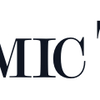Business News

The Economic Times: Breaking news, views, reviews, cricket from across India
Updated: 2 hours 27 min ago
HC pulls up Fadnavis over 2024 poll win
Categories: Business News
Bengal, Odisha set for weekend showers
Categories: Business News

